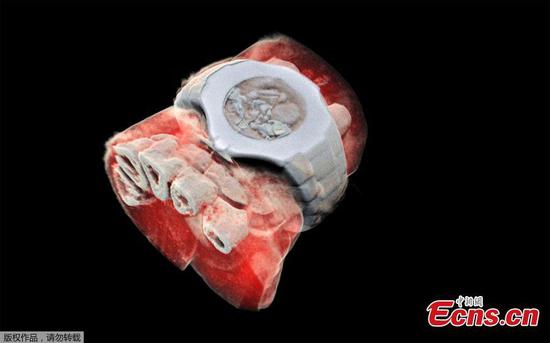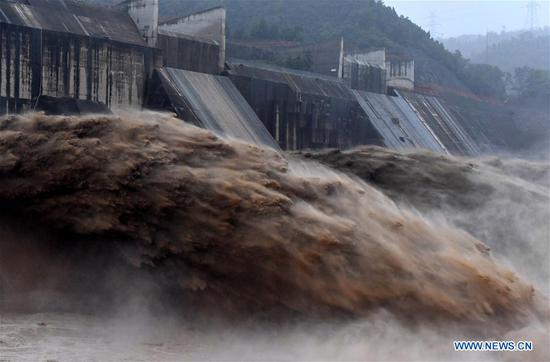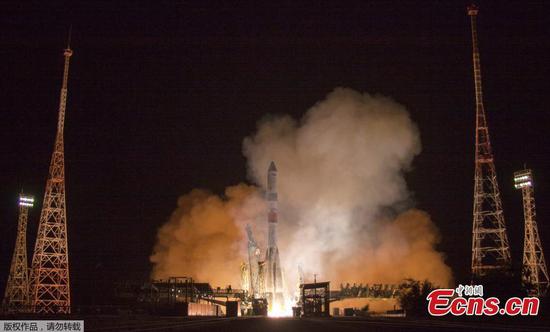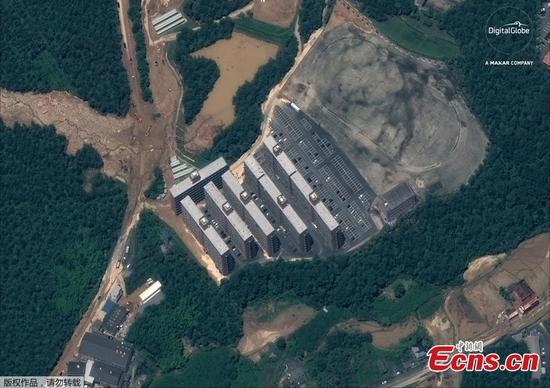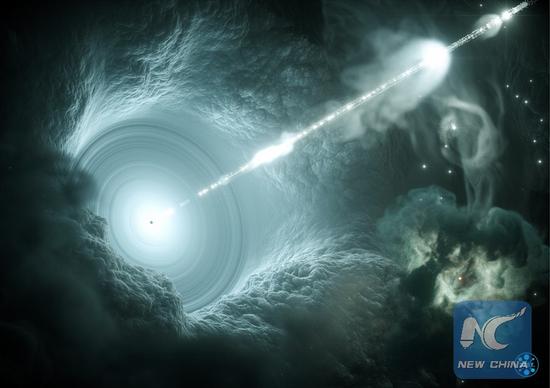
Artist's impression of the active galactic nucleus. The supermassive black hole at the center of the accretion disk sends a narrow high-energy jet of matter into space, perpendicular to the disc. (Credit: DESY, Science Communication Lab)
An international group of astrophysicists has for the first time determined the birthplace of a highest-energy neutrino, nearly four billion light-years away from Earth.
Two papers published on Thursday in the journal Science reported the multi-messenger observations that provide a clue to an unsolved mystery: the origin of cosmic rays.
High-energy cosmic neutrinos are ghostly subatomic particles that can travel unhindered for billions of light years from the most extreme environments in the universe, carrying unique information about the regions where they are produced.
IceCube, the largest detector specialized in hunting the particles, which was located at the South Pole, detected on Sept. 22 in 2017 the neutrino whose energy was more than 40 times that of the protons produced in the world's largest particle accelerator at CERN outside Geneva.
The birth of neutrinos is always linked to proton interactions while the cosmic rays largely consist of high-energy protons, according to the studies.
Neutrinos, always accompanied by the photons, possess no charge, so unlike the electrically charged particles of cosmic rays that can be deflected by cosmic magnetic fields, they can travel through the universe without detours.
Then, a space observatory called Fermi-LAT reported that the direction of the neutrino was in line with a known gamma-ray source in an active state: the blazar TXS 0506+056, making the blazar a highly likely candidate for the neutrino source.
The blazar, a giant elliptical galaxy with a massive, rapidly spinning black hole at its core, is situated just off the left shoulder of the constellation Orion. It ejects outflows of particles and energetic radiation moving close the speed of light.
Those huge "jets" shoot out into space at right angles to the massive vortex that sucks matter into the black hole, according to the studies.
Astrophysicists have long suspected that these jects generate a substantial proportion of cosmic particle radiation.
"Now we have found key evidence supporting this assumption," said Elisa Resconi from the Technical University of Munich, whose group contributed to the findings.
The findings, confirmed by ground- and space-based telescopes around the globe, demonstrated the advantage of combining the signals from different cosmic messengers, like neutrinos and photons.
"The era of multi-messenger astrophysics is here," said National Science Foundation director France Cordova.
"The intriguing results also represent the remarkable culmination of thousands of human years of intensive activities by the IceCube Collaboration to bring the dream of neutrino astronomy to reality," said Daren Grant, a professor of physics at the University of Alberta and the spokesperson of the IceCube Collaboration, an international team with over 300 scientists in 12 countries.
Encompassing a cubic kilometer of deep, pristine ice a mile beneath the surface at the South Pole, the detector is composed of over 5,000 light sensors in a grid.
When a neutrino interacts with the nucleus of an atom, it creates a secondary charged particle, which produces a cone of blue light that can be detected.
Because the charged particle and light it creates stay essentially true to the neutrino's direction, they give scientists a path to follow back to the source.









